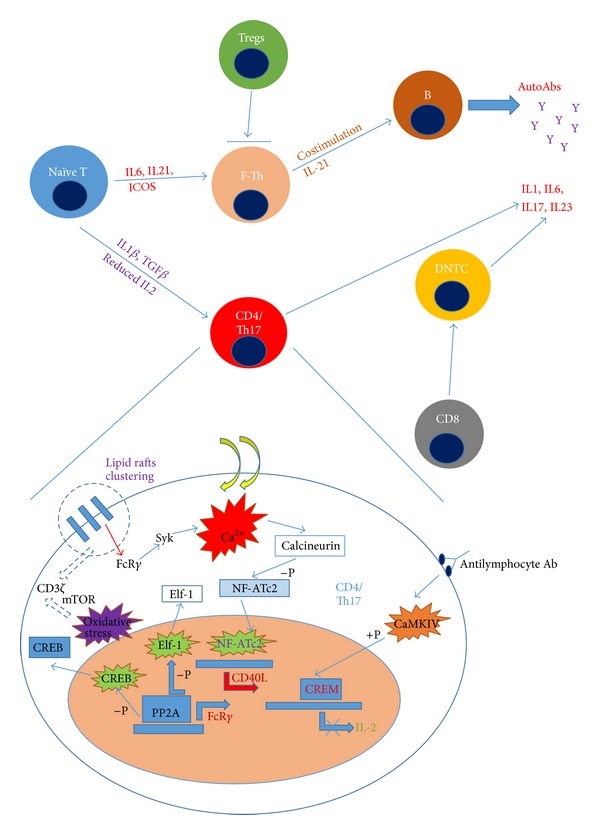Figure 1.

Development of lupus T cells, their interactions with T-regulatory cells and B cells, and alterations of the intracellular physiology of effector lupus T cells. Naïve T cells develop into follicular T-helper cells which cross-talk with B cells for autoantibody production under the stimulation of IL6, IL-21, and ICOS. Naïve T cells develop into effector CD4+ and Th17+ T cells which produce proinflammatory cytokines and exhibit altered intracellular physiology including clustering of CD3-TCR, oxidative-stress induced calcium flux, and consequent change in mRNA transcriptions of various important genes (see text for details). Abbreviations: Tregs, regulatory T cells; ICOS, inducible T-cell costimulator; F-Th, follicular T-helper cells; Syk, spleen tyrosine kinase; CaMKIV, calcium/calmodulin-dependent kinase IV; CREB/CREM, cAMP response element (CRE) binding protein (CREB)/CRE-modulator (CREM); NF-ATc2, nuclear factor of activated T cells; Elf-1, transcription factor Elf-1; Ca2+, calcium ion; PP2A, protein phosphatase 2A; mTOR, mitochondrial transmembrane potential and mammalian target of rapamycin; +P, phosphorylation; −P, dephosphorylation.
